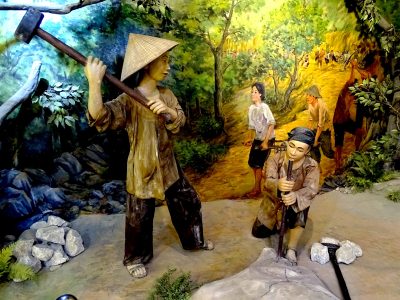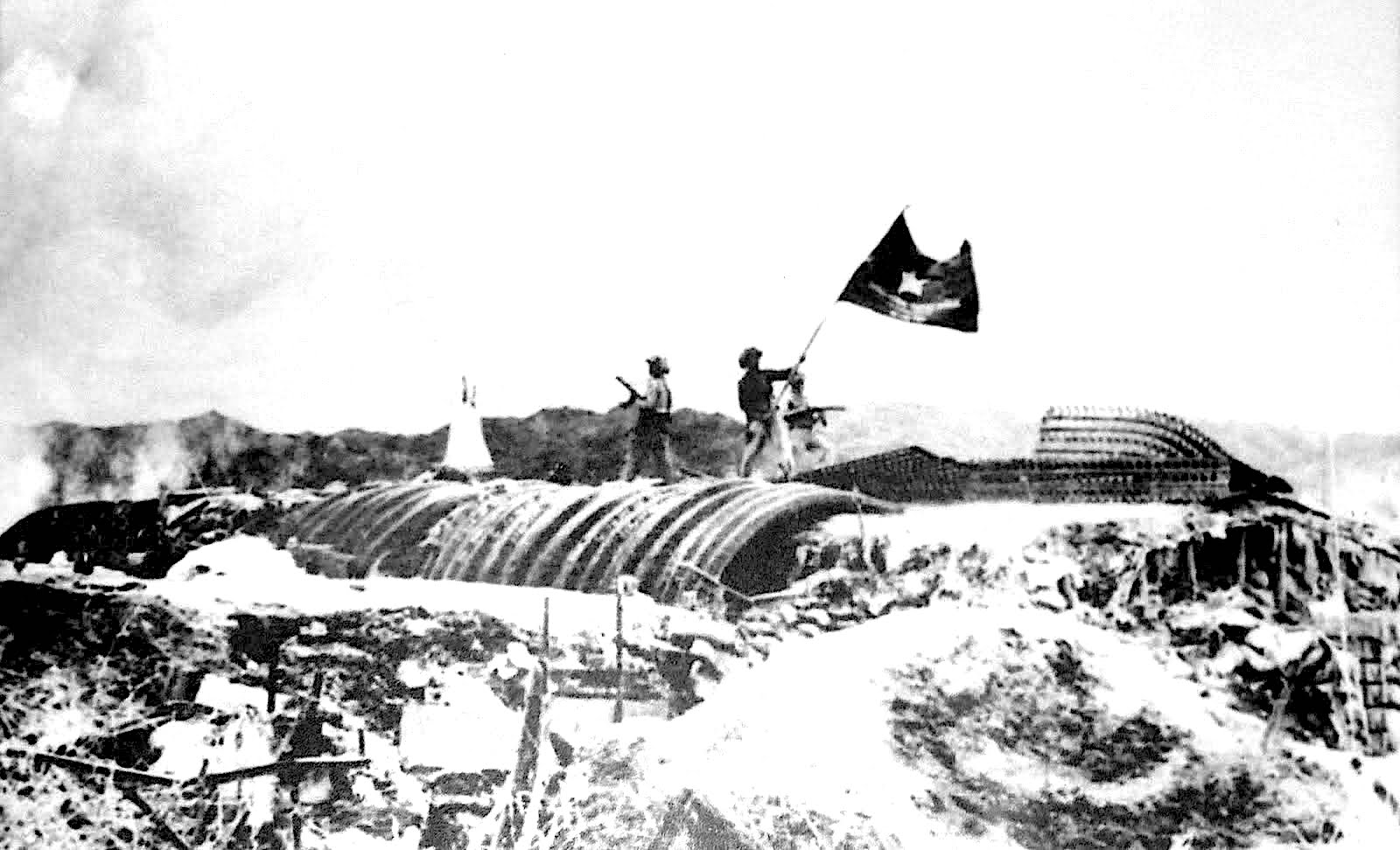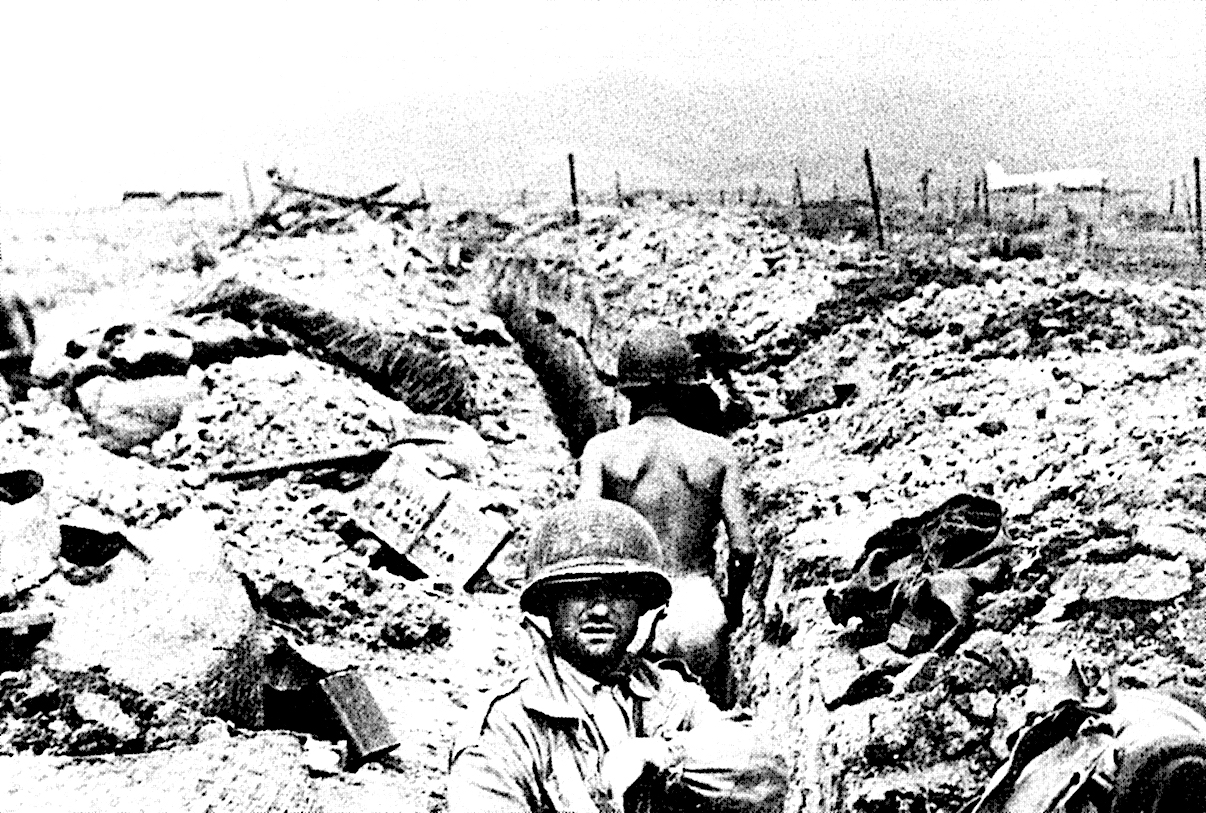The Battle of Ðiên Biên Phú at 70
How did the Vietnamese prevail at that world-historical moment? The answers shed light on the world we see outside our windows now.

All Global Research articles can be read in 51 languages by activating the Translate Website button below the author’s name (only available in desktop version).
To receive Global Research’s Daily Newsletter (selected articles), click here.
Click the share button above to email/forward this article to your friends and colleagues. Follow us on Instagram and Twitter and subscribe to our Telegram Channel. Feel free to repost and share widely Global Research articles.
Global Research Wants to Hear From You!
***
I had the most salutary email the other day, a reviving lift amid these, humanity’s darkest days, surely, in the memory of anyone living. It was from George Burchett, an Australian painter who resides in Hanoi, the city of his birth.
George was born in Hanoi because he is the offspring of Wilfred Burchett, one of the towering greats among 20th century correspondents. Wilfred is celebrated for many things, one of which is his coverage of Vietnam’s anti-imperialist wars, of which there are two, from the North.
And George wanted to remind those who receive his privately distributed newsletter, People’s Information Bureau, that it is time to mark the 70th anniversary of the victory of the Viêt Minh, Ho Chi Minh’s revolutionary movement, over the French at Ðiên Biên Phú, a valley in the remote highlands hard by the Laotian border in northwestern Vietnam.
The battle of Ðiên Biên Phú lasted 55 days, from March 13 to May 7, 1954. Two months after the French were catastrophically defeated they signed the Geneva Accords, wherein they agreed to withdraw all forces not only from Vietnam but also from Cambodia and Laos, France’s other colonial possessions in Indochina.
The Viêt Minh victory at Ðiên Biên Phú makes riveting history all by itself. John Prados, a lately departed friend, wrote my favorite among the many books on the topic. As the French grew desperate, he recounted in The Sky Would Fall (Dial, 1983), the Eisenhower administration made plans to intervene against the Viêt Minh — plans that included America’s second use of atomic bombs.
Eisenhower, the Dulles brothers (John Foster at State, Allen at the C.I.A.), and others never got beyond an extensive but covert operation before the French forces under Christian de Castries went down. But we find in Prados’ book a suggestion of the madness and delusion that started the Second Indochina War and prolonged it for 21 years.
Washington’s policy cliques, not to mention certifiable paranoids such as the Dulles brothers, are incapable of learning anything from anything, so captive are they within our republic’s exceptionalist ideology. The post–Vietnam record of American foreign policy demonstrates this all too amply.
But there are lessons the rest of us can learn from the Vietnamese triumph at Ðiên Biên Phú and its defeat of the Americans in the two decades and a year of war that followed. Let us not miss these for the light they shed on the world we see out our windows and how we should act upon it.
Strategic Genius

Viet Minh troops planting their flag over the captured French headquarters at Dien Bien Phu, May 7, 1954. (Vietnam People’s Army – Wikimedia Commons, Public domain)
General Võ Nguyên Giáp proved himself a strategic genius as he led the Viêt Minh forces to victory at Ðiên Biên Phú. He famously surrounded the French from the hills that enclosed de Castries’ garrison and made full use of guerrilla tactics as he deployed heavy artillery, carefully arranged for maximum impact, in an elaborate system of tunnels to evade French bombardments.
As is recounted in the histories, men and women in Ho’s revolutionary movement had to disassemble Giáp’s heavy guns to transport them, on foot and by bicycle, piece by piece, up the mountains surrounding the French, where they were put back together and into service. Giáp destroyed de Castries’ airstrip and, with heavy ground fighting, steadily reduced the French perimeter until the fighting was bloodily close.
The Viêt Minh had defeated and captured 12,000 surviving French troops in less than two months. Giáp had not lost a single piece of artillery. The French were at the table in Geneva on May 8, a day after de Castries surrendered. A month later the French government fell.
Thomas Meaney, in a brief but very good piece in the New Left Review’s Sidecar section, described Ðiên Biên Phú as “the Stalingrad of decolonization.” For historical perspective it does not get much pithier: Ðiên Biên Phú stands high among the non–West’s first decisive triumphs against the aggressions of the imperial powers during what we call “the independence era.”
How did the Vietnamese prevail at that world-historical moment? In this lies one lesson worth learning.
Meaney, a fellow at the Max Planck Society in Göttingen, Germany, points out that Vietnam’s anniversary celebrations of their victory last week included a full-dress reenactment of the battle, wherein the peasants and enlisted soldiers who hauled all that artillery up the mountains were prominently honored. Why? What were the Vietnamese saluting?
As Meaney rightly explains, the supply lines serving General Giáp were possible because Ho had, by 1954, created a shared identity among the Vietnamese, a common recognition and purpose, that made possible a national mobilization against the French. This was Ho’s sine qua non.

Võ Nguyên Giáp and Ho Chi Minh in 1945. (AP Photo, Wikimedia Commons, Public domain)
“What must we do to realize a Ðiên Biên Phú” Frantz Fanon wondered when he published The Wretched of the Earth seven years later. The answer that should interest those eager to learn from history and experience lies in the peasants and porters. They had a common consciousness, an awareness of who they were, their circumstances, and what they had to do about their circumstances. This enabled them to act.
And that, in turn, is what I mean by a lesson worth learning.
Blanket Indifference to Genocide
When you talk to people day in and day out about the Israeli–U.S. genocide in Gaza, you start to realize that this obscene crisis has pushed in the faces of those who oppose it a very raw reality from which most of us have tended to flinch.
All of the institutions through which citizens of the West are supposed to express their preferences and demands are broken. Among those purporting to lead the Western democracies we find a blanket indifference to those objecting to a genocide they witness daily in real time.
This is our shared circumstance. If we do not live in functioning democracies, as the West’s support of apartheid Israel makes rudely plain, it is only when we cultivate a common consciousness of this reality — no flinching — that people will know what mountains they have to climb and what they must carry with them.
George Burchett, who has dedicated considerable time over some years to archiving his father’s work, sent the most delightful photographs of Wilfred in the People’s Information Bureau mailing that marked the Ðiên Biên Phú anniversary.
There was Wilfred, in sandals and a pith helmet, working on a piece at Ho’s jungle headquarters in Thai Nguyen Province. In a piece published in Vietnam+, a Hanoi website, you see Wilfred talking to Ho over tea at what looks to me — I could be mistaken — the modest house Ho had built behind the grandiose palace where the colonial governor had lived.
The two reporters who interviewed George, Phan Hong Nhung and Pham Thu Huong, noted “the spirit of solidarity, self-reliance, the great leadership” abroad in the Vietnam of 1954. I have to say this landed hard, devoid of all three do most Americans seem today.
But George sent something else in his PIB missive that carries another lesson in it.
It is a digitized copy of a piece Wilfred filed on March 30, 1954, headlined, “A Great Disaster for the French Army.” Wilfred was done with the mainstream press by this time. This was his first file from Vietnam for The Daily Worker, the British daily, and marked, if I have this right, his arrival among independent media.
“The action now taking place at Ðiên Biên Phú is the most tragic failure for French arms in the whole disastrous fiasco of the Navarre Plan to crush the people of Viet Nam,” his lead reads. “To the heavy losses in manpower must be added the destruction of French air power which makes this battle one of the costliest of the whole ‘dirty war’ to the French.”

French troops seeking cover in trenches at Ðiên Biên Phú. (Stanley Karnow: Vietnam: A History, The Viking Press, New York 1983, Wikimedia Commons, Public domain)
You wouldn’t read anything like that in The Times of London or The Daily Express, for which Burchett has previously filed, at the end of March 1954.
The battle of Ðiên Biên Phú had begun just two weeks earlier. Burchett’s reference is to Henri Navarre, a professional soldier who was sent from Paris a year earlier to subdue the Vietnamese liberation movement.
Working From the ‘Other Side’
I see another lesson in Wilfred Burchett’s files from North Vietnam, beginning in 1954 and running all the way to the victory in 1975. It is the honor and worth of working from “the other side,” and the difference this can make in the formation of that motivating, mobilizing awareness I previously mentioned among people otherwise propagandized into acquiescent silence.
Burchett’s reports from the North are precisely a case in point. As anyone who lived through the Vietnam years will know, Wilfred’s work was essential to the coherence and determination of the antiwar movement, especially but not only in the U.S. The lesson here is that independent media — print, webcast, podcast, video, audio, all of it — is similarly essential to an informed understanding of events in our time.
(Disclosure at this point. I was fortunate enough to work with Wilfred in the mid–1970s, taking dictation and editing some of his files as the Vietnam war drew to a close. I detailed this relationship in Journalists and Their Shadows, Clarity Press brought out last autumn.)
Last weekend The Floutist, the Substack newsletter I publish and co-edit, posted a piece called “Report from Donbas,” written by a renowned Swiss journalist named Guy Mettan. It is based on a tour Mettan made last month of the two Donbas republics, Donetsk and Lugansk, which voted in referenda two years ago this September to join the Russian Federation.
Mettan’s report shows us a place and a people we are not supposed to see, just as Burchett began to do 70 years ago this spring. Mettan’s piece, another reportage from “the other side,” opened my astonished eyes very wide even as I edited it. And it is precisely another case in point.
*
Note to readers: Please click the share button above. Follow us on Instagram and Twitter and subscribe to our Telegram Channel. Feel free to repost and share widely Global Research articles.
Patrick Lawrence, a correspondent abroad for many years, chiefly for The International Herald Tribune, is a columnist, essayist, lecturer and author, most recently of Journalists and Their Shadows, available from Clarity Press or via Amazon. Other books include Time No Longer: Americans After the American Century. His Twitter account, @thefloutist, has been permanently censored.
Featured image: Diorama of Peasants Assisting Struggle at the Dien Bien Phu Victory Museum in Vietnam. (Adam Jones, Wikimedia Commons, CC BY-SA 2.0)

